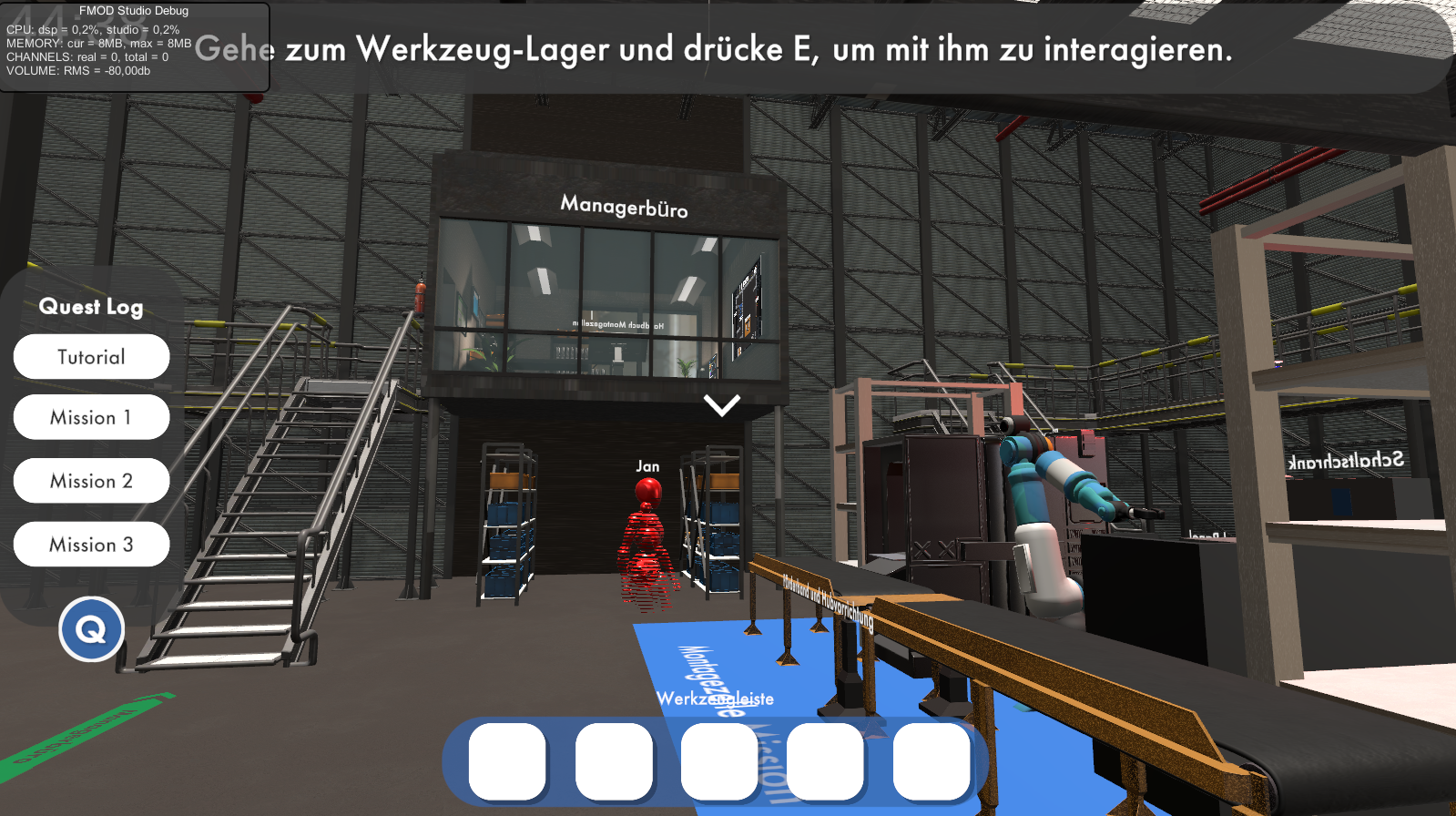
- Details
Roles: Student Position as Game Designer
Link to project page (German): https://www.th-koeln.de/anlagen-energie-und-maschinensysteme/projekte_62915.php
The FutureING Educational Games are part of the ATPO module from the faculty of Anlagen, Energie- und Maschinensysteme of The University of Applied Sciences in Cologne (TH Köln), made for first semester students. The project is led by Prof. Dr. phil. Anja Richert, who envisions the ATPO module to become a fully self-learning module, with two games as a means of both assessing student competencies as well as motivating them to participate. The module aims to teach planning, communication, collaboration and cooperation skills, by employing two Games: The FutureING AR and the FutureING VR Game. In addition to that, the games are to be used as a basis for research about the use of Hyperimmersive Seriours Games and Gamification in education.
This project is radically different from any other project I have worked on so far:
1. Stakeholders and their requirements had to be analysed.
2. The project had already been running for a while
3. I had to work in development for media I was not accustomed to (AR and VR)
The first to months at the job I spent fixing last minute issues, as early versions of the games were about to be released for the students. While the survey I conducted proved the AR Game to be a success, the VR Game (adapted to Desktop because of restrictions due to the pandemic) suffered from "childhood sicknesses". The survey for the VR Game showed that the tutorial and readability were main issues for the players. Generally, I find those the hardest to design and I usually need to work through several iterations until I am satisfied with the result. This means that I spent most of the time on solving those issues. The tutorial I have planned to be more concrete, meaning that the players will be walked step-by-step through an exemplary task before they are let into the final game, as the main required of the game is to force the players to communicate and not to figure how to solve the tasks. The tutorial should already help with readability issues as after that the players will know what to look for but also more diegetic means of conveying information will be employed, such as recognisable and animations of environmental objects that are clearly visible from afar.
In addition to that, I am currently working on diversifying level goals (some players have complained about repetiveness) and to create more collaborative and cooperative mechanics. For the latter, I went through the list of inputs that is available to our games and combined those inputs with the skills the ATPO module aims to teach and then added a narrative touch to explain why it is in a game. For instance, I combined the drag and drop input of the mouse with the cooperation skill and gave it a narrative touch: two players need to pull an end of a cable, connecting them in the middle to start a machine.
Moreover, I worked on tying the games together and also tying them into the ATPO module. This I did on the one hand by introducing narrative "Phases" into the VR Game, while also using narrative to bringing it closer to the AR Game. For the AR Game, I conceptualised a level-spanning shopping system, in which players can buy upgrades using their score. This shop system will also be used to connect the AR Game to the rest of the module. Voluntary in-game quizzes will allow players to show their knowledge of the subjects taught in the first semester. After finishing the quiz, players will gain additional score based on their performance, which they can use in the shop.
All in all, I am very happy to work at the FutureING project as it gives me new challenges and makes me work in a workflow different from that encountered in the semester projects at CGL, while also of course giving me a lot of practical experiences and letting me peek into research processes.
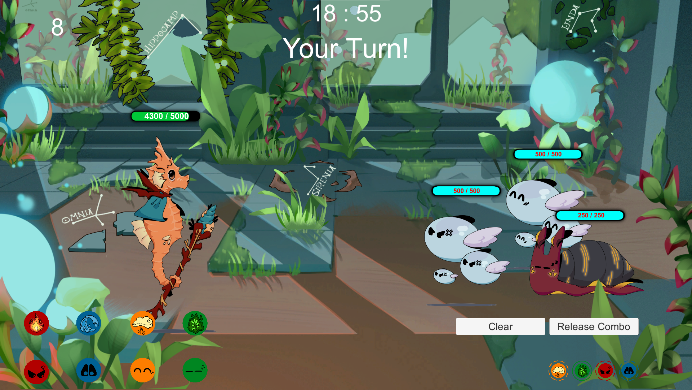
- Details
Tools: Unity
Roles: Game Design Lead, Project Manager, Playtest Evaluation
Link: https://anton-sagel.itch.io/spell-it-out
With Spell It Out!, we target friends who want to have light-hearted fun while they solve puzzles as a team of two. Spell It Out! aims to be playable in many contexts, requiring only one PC per player (although due to its technical simplicity, a port to other devices, especially mobile, is thinkable) as well as a verbal communication channel – be it landline, online chat or a shared room. The game’s challenge consists of obstacles that can only be overcome by the players by comparing information spread into different information systems (i.e. in the physical game world or in a spell book), however, this information is divided between the two players, meaning that communication is critical in order to advance through the game.
Spell It Out! actually consists of two games – each representing a parallel universe – that are played simultaneously: the Hero game for the more action-oriented player and the Mentor game for the more thinking-oriented one. Both players should bring reading-comprehension and communication skills.
Inspired by MacLuhan’s “the Medium is the Message”, the Hero’s and Mentor’s game tell the same story of literal and figurative ascension to save their respective universe from apocalypse. However, the story is being expressed, with our ultimate goal having a relationship between the two parts of Spell It Out! similar to the one the movies La Jetée and Twelve Monkeys have.
An underwater tower as a level structure (again, literally and figuratively) expresses the literal part of the ascension theme. While monsters hinder the Hero’s ascension, the Mentor will have to deal with puzzles. To fight the monsters, the Hero needs powerful spells, but can get the recipes only from the Mentor. The Mentor, on the other hand, needs hints the Hero finds in their level to be able to solve their puzzles.
Hero and Mentor, both chosen by fate, have a unique connection that lets them communicate even though they are in different universes. With both wondering what their role may be at the beginning, they learn that they must scale the tower to prevent the doom of the Multiverse, with the Mentor transcending to a higher being and the enlightened Hero becoming the Mentor for a new generation of Heros at the end of the game.
Art by Anne Goossens and Ronja Wolf
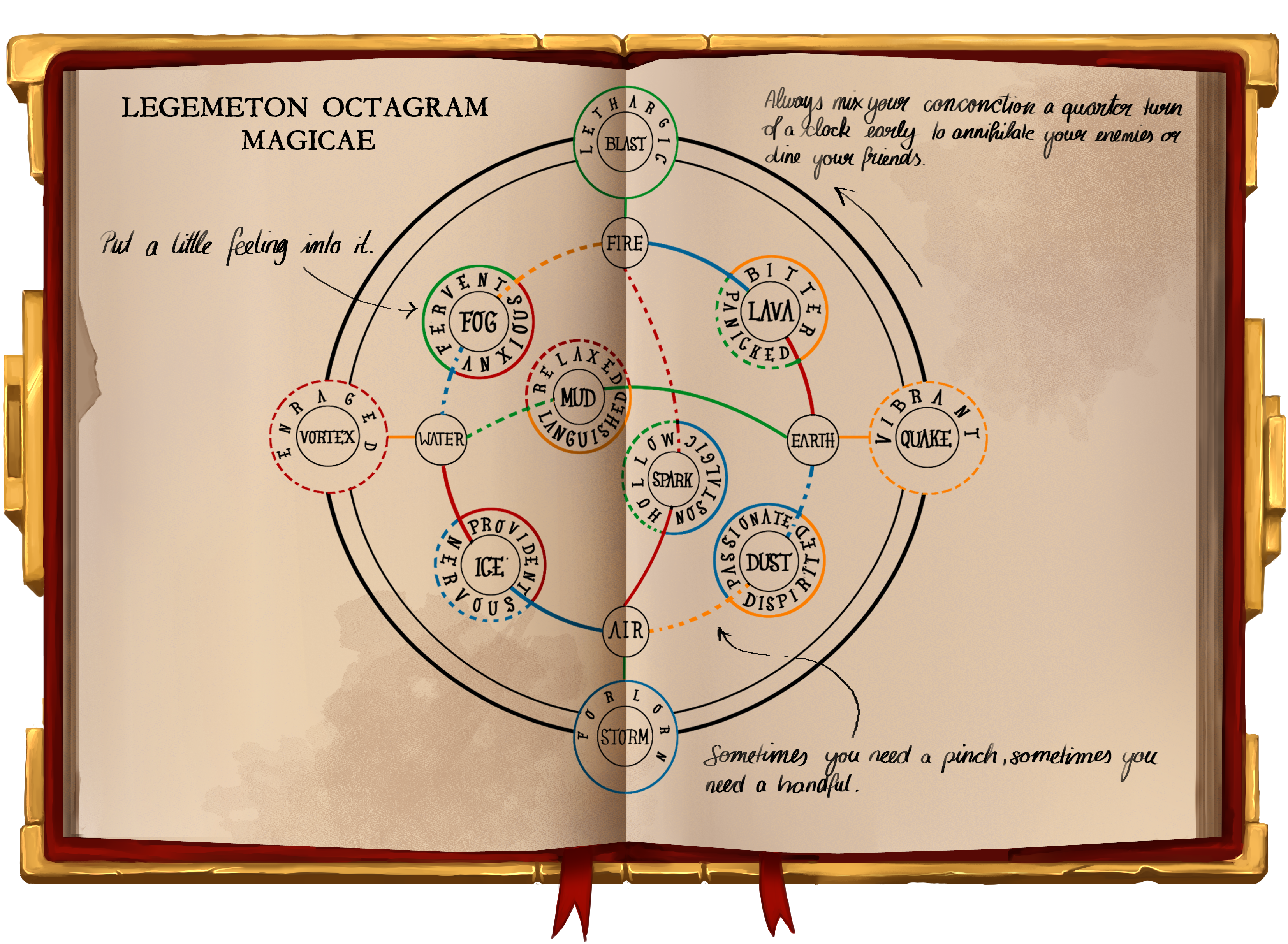
- Details
Tools: inkarnate Map Editor
Roles: Dungeon Master
The enemy hordes are about to close in on the civilians trapped by the shore! Luckily, a fine group of four adventurers (a.k.a. THE PLAYERS) were able to set up a last stand at the site of an ancient temple, delaying the advance. This allows a small trickle of civilians to flee the area on small boats – the longer the players hold out, the more civilians can escape.
The map consists of four areas plus a “outflanking strip” on the right:
1. Forest and Farmhouse: Used by the enemy as a grouping area, they offer great opportunity for ambushes. Hidden potions and weapons give additional incentive for advanced positions.
2. The open grassland: With hardly any cover, it is risky to cross for both friend and foe.
3. Temple and cliffs: chokepoints and cover make it the ideal defensive position.
4. The shore: Here the civilians wait for the boats. If the enemy reaches it, the game is lost!
The one shot is divided into two phases. First, in the preparation phase, the players can set up barricades, caltrops, boiling tar and the like as well as equipping a ballista on a watch tower with various kinds of ammunition. Then the second phase, of course, battle. All five combat turns, a new enemy wave spawns at the top of the map and, as waves become increasingly difficult, the often overlap. Each wave has different behaviour, from meat-shield frontal attacks to swift outflanking – the erection of a catapult even requires the players to counter attack! This means that the players need to be flexible and to communicate well together.
To make every possible player character shine, all damage types that appear in D&D and most of the resistances / vulnerabilities are represented within the enemies. In addition to that, nearby creatures such as seagulls and an owlbear can be asked for help with the according skills / spells. In addition to that, magical secrets and powerful artefacts can be unlocked in the temple as the battle continues.
In the end, all the preperation payed off (I had over a dozen typed pages of enemies alone) - the one-shot was great fun, as it saw dynamic action on the one hand, while it was also interesting to listen to the players debate about how to best counter the enemy waves.


- Details
Role: Dungeon Master
Having been assigned a mission by the King in the last session to investigate the whereabouts of a royal regiment send to a duchy notorious for border clashes, the players quickly find out that royal order has long ceased to exist.
The small fortified village of Lipmund was the first settlement the players encounter in the Duchy. Amongst other shops, there is a glass maker selling mirrors and a healer’s house overladen with wounded and / or strangely mutated soldiers. In return for helping her with the wounded and solving the riddle of a magic tortoise by the river to get more herbs for her, the players received a glow-potion from the healer. After they had asked around the village, the players found a spot were the regiment had set up camp. There, the players discovered a mirror as well as a situational report hinting at troubles within the regiment. Then, the players followed tracks into a nearby cave, where they stumbled upon the petrified remains of the regiment’s captain. After warding of several smaller monsters, they realise that a basilisk’s lair is ahead. They rushed back to the village and equipped themselves with mirrors. The players then set-up a trap inside the cave and petrified the basilisk.
After that, the players began reinforcing the village, as an attack seemed eminent. And soon enough, a band of marauders attacked the village, as it later turned out, for a magic artefact that came in with the mutated soldiers. The player began to lose ground after a while, when the marauders’ leader turned on his fellow attackers after he had secured the artefact from himself. The players had met the marauders’ leader before, a man with rather ambiguous morals. He and one of the player’s character’s sister were in an organisation tasked with tracking down and destroying the artefacts, whereas the marauders wanted it for their own gain.
For the session, I crafted battlemap tiles. The idea was to have different terrains to make fighting exploring more interesting, such as rivers with passages, small and large bushes, tall grass and roads. And most importantly of course, the two points of interest, the session will be focussed on: the defensive wall of the village and the basilisk’s lair in the rock formation.
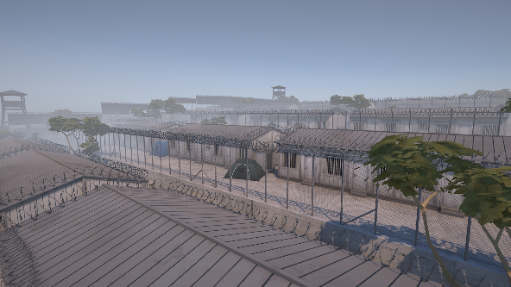
- Details
Tools: Unity, FMOD, Yarn Spinner
Roles: Game Design, Sound Design, Playtest Evaluation
Link: https://gamejolt.com/games/the-bestowed-city/527357
On the verge of starving in an internment camp, a refugee boy’s only escape from the dreary and monotonous life are his dreams, in which he rescues his people from captivity; but when more refugees arrive to the camp he must learn to keep his head up before he loses all hope.
The Bestowed City is a puzzle game about people’s ignorance by those who could have helped ultimately shattering the hopes and dreams of those in need. The game will be released for PC and targets players interested in immersing themselves into a character and his story as well as exploring a game’s mechanics and tinkering with them.
The Internment Camp and the Dream World are antithetical; in the Internment Camp it takes the heart succeed, whereas the mind is needed to finish the episodes. Unlike the Dream World, the player is handicapped in their movement in the Internment, by a slow and heavy walking speed and a dark overlay, blocking the player’s view on the screen’s edges.
The dreams reflect the boy’s immediate and greater need. In the Dream World, the boy can freely move and plant the Staff of Musa to grow an endless supply of fruits, whereas in the Internment Camp he is locked up and hungry. Life in the Internment Camp is shaped by uncertainty, whereas problem-solving dominates the Dream World.
Should the player fail to help NPCs, negative feelings such as guilt or anxiety will personify in nightmares. They confront the player in verse (combining the Internment Camp’s dialogue’s with the Dream World’s poems). The player then has to find an optimal answer fitting to the rhyme and rhythm of the previous verses.
Once a dream finishes, a new day starts; food retribution has commenced. New people arrive– interactions with them have an impact on the Dream World. Both the Dream World as well as the Internment Camp feed into the boy’s hope. The less hope the boy has, the more does the overlay (see above) block the player’s view, and conversely, the more hope the boy has, the more the player can see. The boy’s hope rises with the player giving optimistic or positive answers to NPCs or by finishing a level in under three tries. However, the boy can also lose hope, namely by giving pessimistic or offensive answers or by failing more than three times in Nightmares. Should the boy lose all his hope, the overlay will fill the entire screen and the game thereby be lost.
The player also finds objects from the Internment Camp in the Dream World. Most notably, the player gets handed a talisman, which is incorporated into the Dream World and Nightmares as an overlay representing the player’s tries, starting with three at the beginning of each level. But also containers, tents and barbed wires are incorporated.
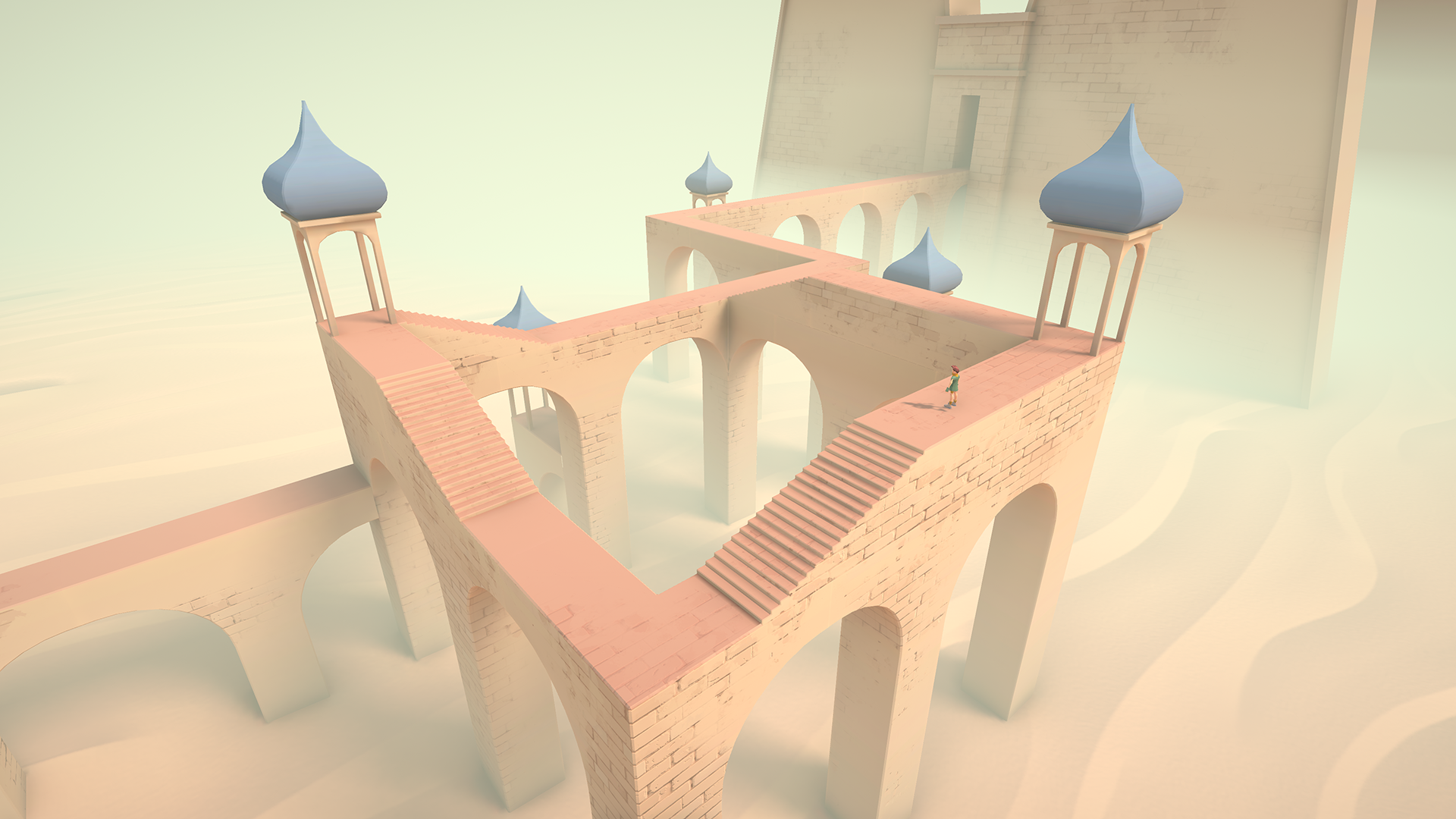
Art by Arkadijs Gribacovs and Alexey Garmash

- Details
Tools: Unity
Roles: Game Design, Project Management, Playtest Evaluation
Link: https://t-ruth.itch.io/we-run
Playing the 3D first-person platformer We Run, the player experiences a challenge of the classical conception of goal and control in a non-linear, hard to manoeuvre game world overthrowing certainty and robustness of identity. Levels bring an explorative component to the game by being multilinear in their layout.
The physical embodiment of the player’s avatar shall be referred to as character or Hull. The psychological self shall be referred to as alter. In the game, the player’s character holds several alters, forming a system.
At any given time, only one alter is active. Alters are split into unstable and stable.
While each of the alters has a unique mechanic, only the active one’s can be used by the player. Which alter is active is determined randomly again and again throughout the level at unfixed intervals (statistically expected time equals thirty seconds). However, they can also be triggered by player action (positive triggers) or the game environment (negative triggers).
To complete a level, the player must achieve its goal. However, each alter has an individual goal. As a consequence, each switch of alters will also bring a change in goals. The next level always starts with the alter the previous level has been finished with. After Blue has learned to positively trigger each alter, one last level must be completed.
The game’s graphics heavily build on the contrast between organic and tectonic structures and colours are low-key and desaturated. The player, an organic being, finds themselves in a tectonic game world. The player is an outcast trapped in hostile surroundings. They must move on, as their only point of connection to this environment is the ever distant, unreachable organically-styled background.

Art by Liubov Belykh and Sherouk Kamel
- Details


A modification for the strategy game Hearts of Iron IV, published on the Steam Workshop under the alias Quaeknas Zett Ix.
http://steamcommunity.com/sharedfiles/filedetails/?id=1345559573
- Details
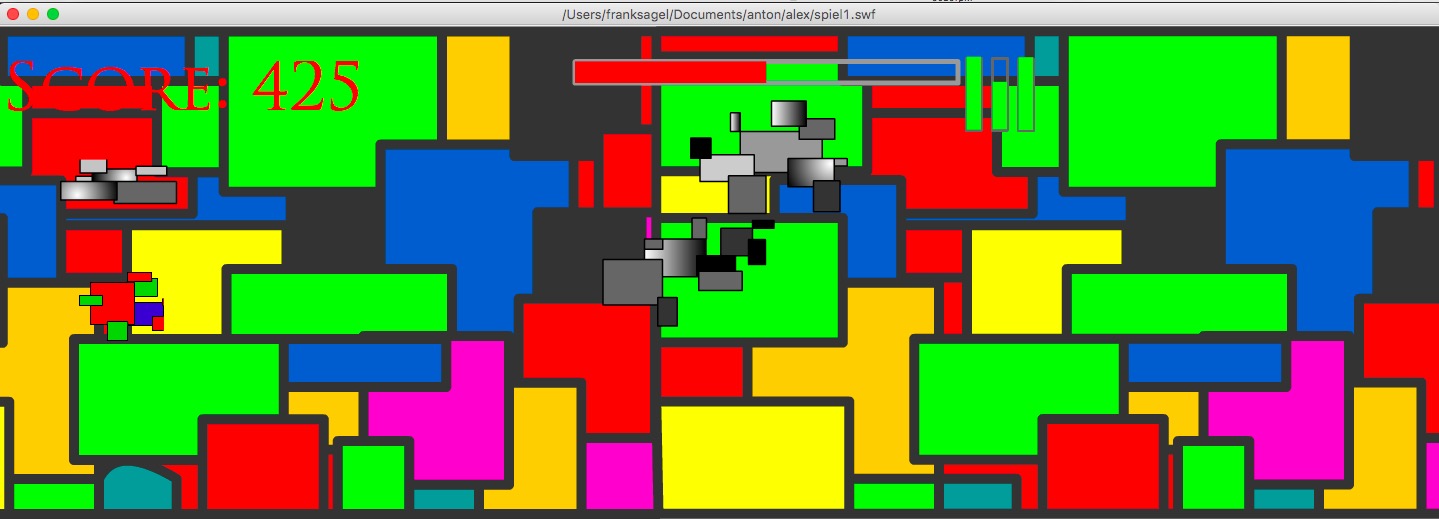
In this 2D game, one must keep up the power of colour and defeat the Greys.
The game includes a healthbar, several recharging attack types, two different types of enemies (fast and shooting), a scoreboard and a game-over screen with restart button.
Created using Adobe Flash and ActionScript.
